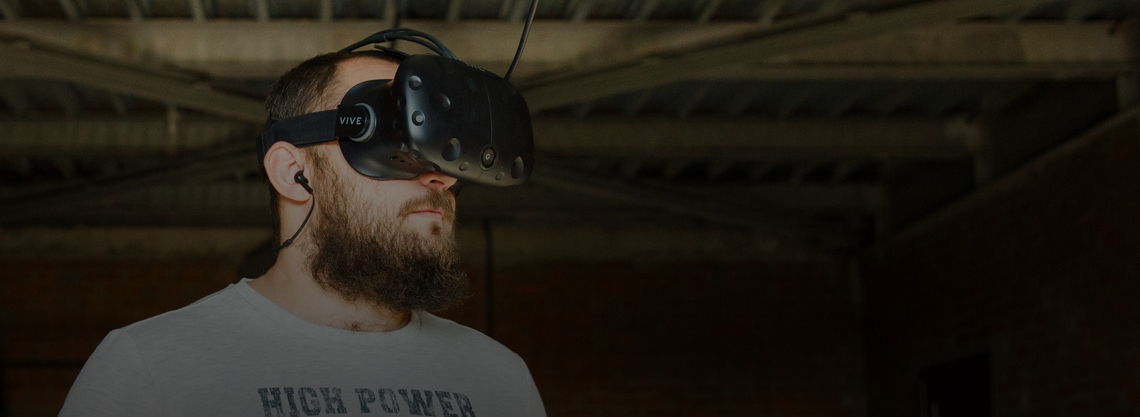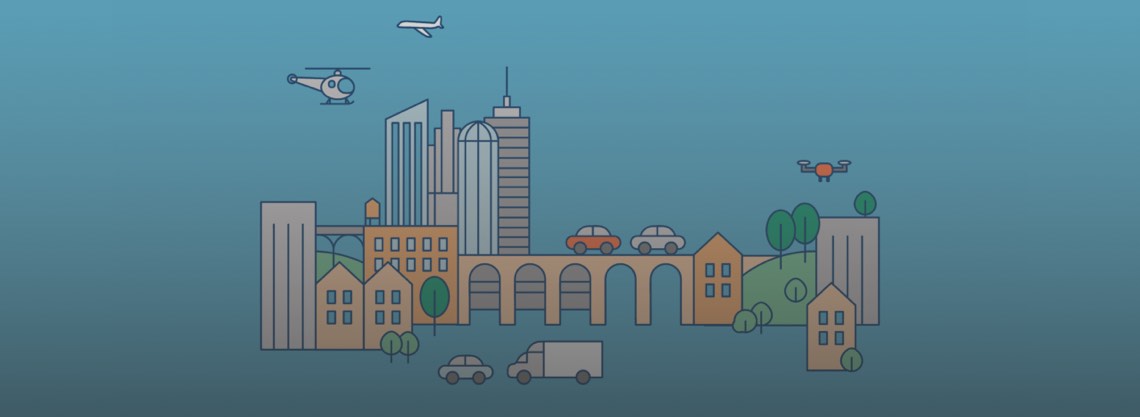While the primary use of VR is thought to be for gaming purposes, virtual reality is gaining popularity in other industries such as engineering, education, VR for architecture, and healthcare. The consumer uses of VR are growing at an alarming rate, and for healthcare, VR is proving to be more than just a novelty.
Despite some statements regarding the relative immaturity of the technology, the medical virtual reality is already making an impact and presents room for creative opportunities. In fact, recent statistics show that the AR/VR in the healthcare market is expected to reach 7.05 billion dollars by 2026. In this article, we will discuss the current state of virtual reality and explore use cases for VR in healthcare. Let’s see how close the numbers are to reality!
What is virtual reality in healthcare?
Virtual reality for healthcare is fundamentally different from other applications of virtual reality. Healthcare is an industry whose regulations and culture are not instantly familiar with the concept of VR. However, this does not prevent the development of new experiences based on virtual reality. VR aims to help patients communicate and improve their quality of life in real time or over long periods. To achieve this, one should use the technology in conjunction with medications, other kinds of therapy and treatments.
This VR movement has the potential to democratize learning, enhance visualization of space and human anatomy, and more while lowering medical costs, decreasing trauma, and improving outcomes. The direct, safe, and effective use of VR is not new. In fact, the practice has been around for some time now. Indeed, hospitals around the world are competing to lead the way in virtual reality technology. The world’s first fully VR-based hospital will soon be welcoming its clients in Israel, while many other medical centers are proud to introduce VR into their routine practices.
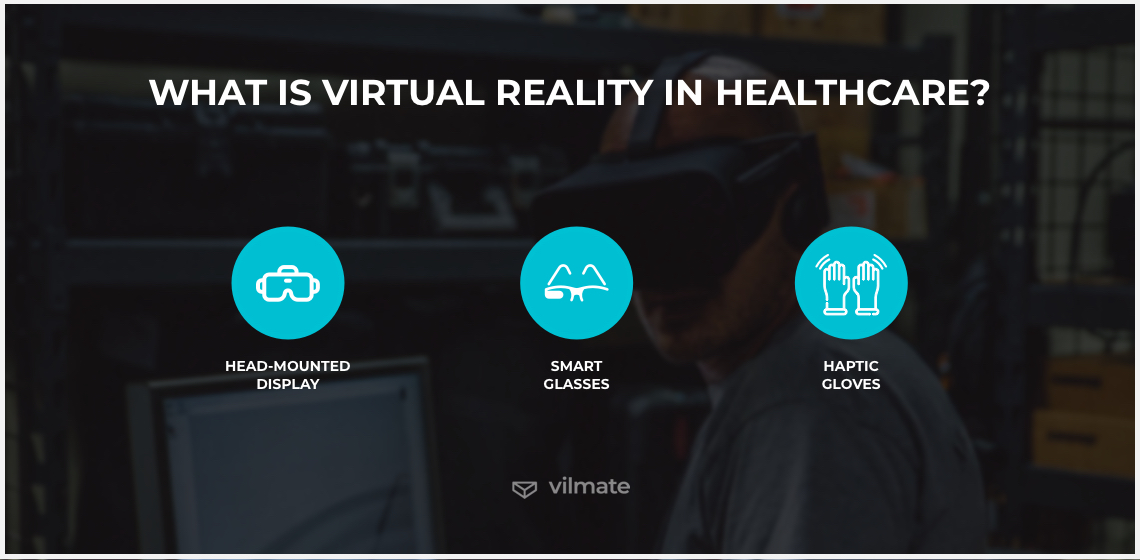
Virtual reality is a great support in the patient assessment process. It provides visual aids for receiving feedback that will enable the patient to be in the right position to assess and manage the symptoms. VR devices can be used for the quick capture of vital information, facilitating any interventions before procedures are conducted. These devices that enable creating VR are:
-
Head-mounted display – HMD products like the Oculus Rift, HTC Vive, Gear VR, or Google Cardboard are devices that have a head strap mounted onto the user’s head, with the display lenses and earphones attached to the strap. Head-mounted displays provide an immersive virtual reality experience where objects are placed in front of the user.
-
Smart glasses – representing a new generation of smart devices, smart glasses are used in healthcare to aid doctors in providing correct medical procedures and diagnostic tests, thus improving clinical outcomes. For instance, Google Glass is a pair of glasses used, among others, during surgeries for video recording and data visualization.
-
Haptic gloves – special gloves are designed to enable natural interaction with virtual environments. They are one of the latest developments in the VR world but already have the potential to bring change to the healthcare industry. Capable of reproducing surgical simulations, the haptic gloves can make the learning process more immersive and effective.
The role of virtual reality in the healthcare industry
VR technology can benefit both patients and practitioners. Virtual reality can offer the potential for personalized treatment that does not rely solely on a clinician’s own knowledge or intuition. It is this kind of human-computer interaction (HCI) that is central to modern medicine.
-
VR for practitioners. VR medical systems are to be used by healthcare professionals to better serve their patients and also help doctors in a more personalized way. The ease of use and the powerful processing power will enable clinicians to deliver more efficient care. This will ultimately save the healthcare industry money, improve patient care, and boost the bottom line.
-
VR for patients. Virtual reality technology has the potential to radically improve patient care. Unlike videos or other 2D media that are, by definition, non-interactive, VR can simulate and convey a sense of presence for a patient in a comfortable, "video-game-like" setting. In fact, a user can enter an unrealized environment and feel as though they are physically present within it.
How is virtual reality used for healthcare?
From training the doctors for the future to improving mental health, VR has a number of applications in the healthcare industry. Let’s take a look at the most outstanding uses of virtual reality technology and how it helps change lives for the better.
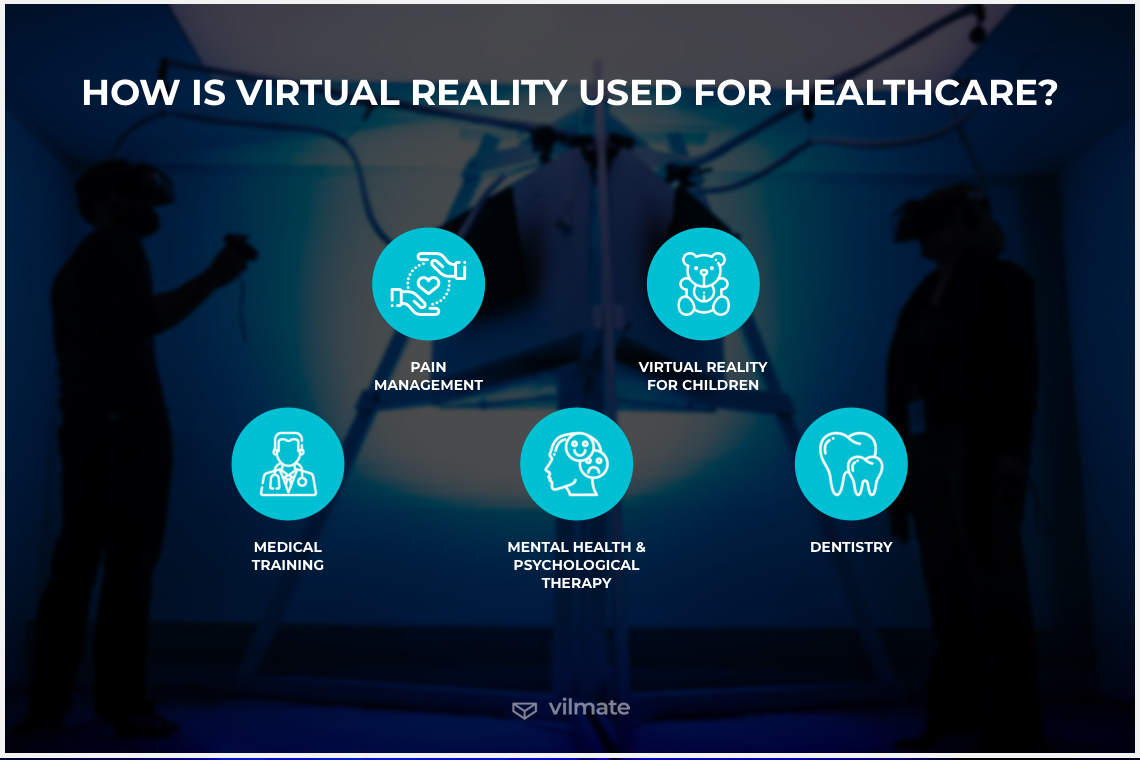
1. Medical training
Medical students and aspiring doctors need to practice their craft to become qualified. Good-quality VR training can teach them the foundation and details of various procedures. The technology is capable of transporting a learner inside a human body for them to better view and practice on not easily accessible areas. Therefore, VR is especially useful for creating training surgery simulators.
For example, in 2018, the Johnson & Johnson Institute launched a global VR training program. This program is designed to teach surgeons, nurses, and medical students how to perform medical procedures. As for now, the company aims to expand the program worldwide and, partnering with startup Osso VR, they plan to start collecting training performance data to measure and report the positive results.
2. Pain management
VR is also a highly effective method for pain relief. The treatment of pain may vary in complexity, but the fundamental principle is always the same. First, the nerves generating the pain are identified and then, the proper treatment is implemented. More complex procedures may include a series of drug, muscle, or nerve therapies. Meanwhile, VR proves to have its own healing capabilities that allow cutting down on the use of medication, which makes it an effective adjunct to other methods.
Virtual Reality Therapy is not only a sophisticated distraction technique. An entertaining, relaxing, and interactive environment, in which a patient is immersed, occupies their brain completely so that there is no room left for pain. One of the pioneers in the field, AppliedVR, is using VR as part of its pain management program, and the results are impressive. Self-reported pain scores are claimed to be reduced by as much as 50% through multisensory experiences. This is one of the reasons why investments in studying VR as a treatment keep growing.
3. Mental health & psychological therapy
Another use case of virtual reality in healthcare is mental health care. A report by Matthew Tull, a professor of psychology at the University of Toledo, claims that virtual reality exposure therapy proves effective for PTSD behavioral treatment. PTSD affects 3.6% of the U.S. adult population. The distinct symptoms of PTSD include anxiety, flashbacks, nightmares, and altered perception. Exposure therapy helps reduce or eliminate these symptoms, and VR is believed to be a valuable adjunct to the treatment. Due to sensory and immersive nature, people don’t need to imagine their traumatic experience - the technology does the work for them.
Phobias and anxiety disorders that affect millions of people around the world can also be treated using VR. Virtual reality exposure therapy can help stop or reduce panic attacks and other forms of anxiety symptoms. Companies like Limbix and Psious work with scientists and healthcare providers to create various scenarios to be experienced by patients. These scenarios allow people to face their fears, practice coping with them, and relax.
4. Virtual reality for children
VR healthcare solutions help to distract children from the pain they may experience during blood tests, flu shots, and other medical procedures. VR goggles can take young patients to a whole other world, which lets them handle anxiety and fears more easily.
Virtual reality is a promising form of therapy that’s already proved extremely effective for a wide range of patients. This non-traditional method for entertainment and soothing is part of the CHARIOT program — Childhood Anxiety Reduction through Innovation and Technology — held at Texas Children’s Hospital. It is designed to decrease patients’ anxiety and pain ahead of surgery. Another program making an impact in the field of child care has been launched by Starlight Children’s Foundation. Since 2018, they have distributed over a thousand Lenovo Mirage™ Solo VR headsets among more than 300 health care facilities, having transformed hospital experiences for thousands of children.
5. Dentistry
Virtual reality has some benefits to offer to dental patients and dental practitioners. Wearing VR headsets instead of safety glasses, patients can abstract away from the procedure itself and relax. Up to 20% of Americans avoid visiting doctors out of dental anxiety. For them, distraction is the best coping mechanism. Immersed in a digital space, they feel more comfortable and at ease.
On the other hand, VR technology is used for creating new VR training programs for dental students and practitioners. In an attempt to simulate a real patient in VR, a 3D rendering of the teeth is obtained first. Then, a haptic model is created based on the original intraoral scan. Finally, the model is put into a virtual reality (VR) haptic dental simulator for training. Although patient‐centered training in virtual reality is a relatively new development in the field, the outcomes have proved positive, so the odds are this new training module in dental education will be implemented on a large scale.
Conclusion
As these examples show, the VR healthcare market is forging ahead. Applications for VR in healthcare are already abundant and are rapidly expanding. In the near future, VR is expected to be a mainstay in hospitals. They are eager to provide support to patients suffering from physical pain and mental problems. VR promises clinically proven solutions for these ailments by mimicking the mind and body. It is a hot area of interest for healthcare providers that keeps gaining momentum, and we definitely should expect more groundbreaking benefits and positive changes to come!
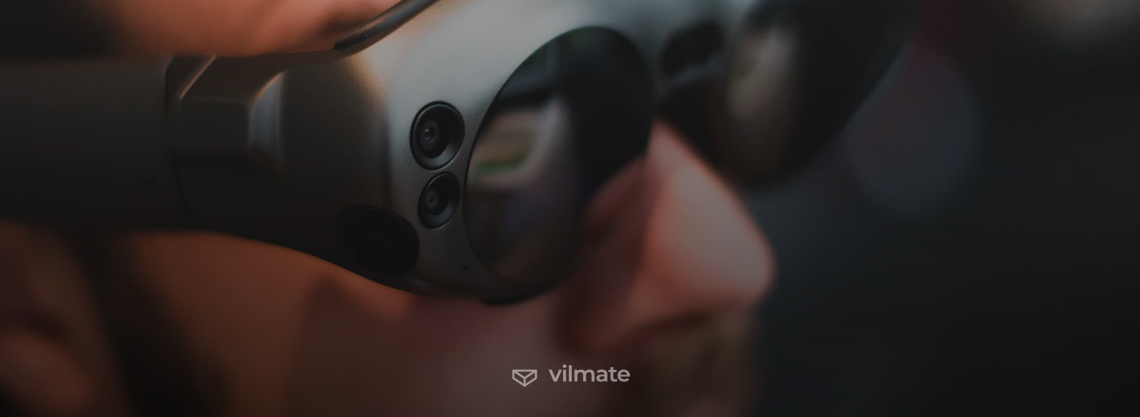
© 2020, Vilmate LLC

